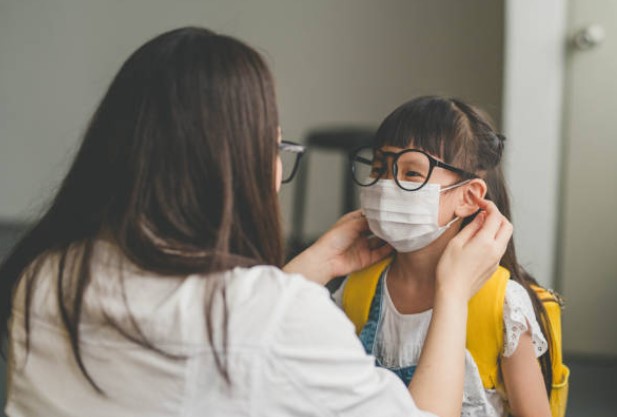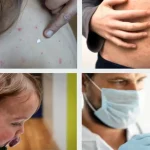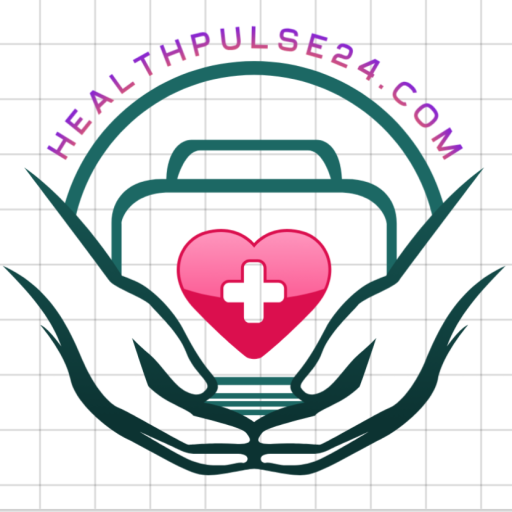Coronavirus disease (COVID-19) is a viral infection caused by the severe acute respiratory syndrome coronavirus 2 (SARS-CoV-2). Since its emergence in 2019, COVID-19 has evolved into a global pandemic, impacting millions of lives, straining healthcare systems, and prompting significant changes in public health policy and lifestyle.
Origin of the Virus
The novel coronavirus is believed to have originated in a wet market in Wuhan, China. Genetic studies suggest that bats were the original host, and the virus may have jumped to humans through an intermediary animal like a pangolin. The zoonotic origin highlights the importance of monitoring wildlife-human interfaces to prevent future pandemics.
How the Virus Spreads
COVID-19 primarily spreads through:
- Droplets expelled during coughing, sneezing, or speaking.
- Aerosols in enclosed spaces.
- Surfaces (Fomites) if someone touches a contaminated surface and then their eyes, nose, or mouth.
- Close contact with infected individuals.
Superspreader events and poorly ventilated areas have shown to significantly accelerate transmission.
Common Symptoms of COVID-19
The symptom profile can vary, but the most commonly reported include:
- Fever or chills
- Dry cough
- Fatigue
- Loss of taste (ageusia) or smell (anosmia)
- Muscle or body aches
- Headache
- Sore throat
- Nasal congestion
Severe Symptoms and Complications
When the disease progresses, it may cause:
- Severe shortness of breath
- Persistent chest pain
- Confusion or bluish lips/face
- Pneumonia
- Sepsis and multi-organ dysfunction
- Death in critical cases
These complications are more likely in vulnerable individuals or those with delayed medical intervention.
Asymptomatic Carriers
Asymptomatic individuals do not display symptoms but can still transmit the virus. Studies estimate that 20-40% of cases may be asymptomatic, making testing and contact tracing essential to control outbreaks.
High-Risk Groups
People at increased risk include:
- Older adults (65+)
- Patients with hypertension, diabetes, heart disease, or cancer
- People with obesity or chronic lung conditions
- Pregnant women (moderate risk)
- People with autoimmune disorders
Diagnosis and Testing
Testing is critical to control the pandemic. Key types include:
- RT-PCR: Gold standard test detecting viral RNA.
- Rapid Antigen Tests: Faster, less accurate; used for quick screening.
- Serological (Antibody) Tests: Detect past infection; not suitable for active diagnosis.
Samples are typically collected via nasal or throat swabs.
Prevention Measures
To prevent infection:
- Wear face masks in public spaces.
- Wash hands with soap or use hand sanitizer.
- Maintain social distancing (6 feet or 2 meters).
- Avoid touching the face.
- Disinfect frequently touched surfaces.
Vaccination Efforts
Mass vaccination campaigns began in late 2020, aiming for global herd immunity. Most vaccines significantly reduce the risk of severe illness and death.
Global efforts by WHO (COVAX program) helped distribute vaccines to low- and middle-income countries.
Types of COVID-19 Vaccines
| Vaccine Type | Examples | Mechanism |
|---|---|---|
| mRNA | Pfizer, Moderna | Teach cells to make viral proteins to trigger immunity |
| Viral Vector | Johnson & Johnson, Sputnik | Uses a modified virus to deliver genetic code |
| Inactivated Virus | Covaxin, Sinopharm | Contains killed virus to stimulate immune response |
Each vaccine type has pros and cons related to storage, efficacy, and side effects.
COVID-19 Variants
New variants arise through mutations:
- Alpha (UK)
- Delta (India): Highly transmissible
- Omicron (South Africa): Immune-evasive
- XBB.1.5 and other subvariants
Monitoring variants is crucial for vaccine adaptation and public health planning.
Long COVID (Post-Acute Sequelae)
Long COVID symptoms persist beyond 4 weeks and include:
- Fatigue
- Cognitive issues (“brain fog”)
- Sleep disturbances
- Joint pain
- Heart palpitations
This condition affects quality of life and requires multidisciplinary care.
Impact on Mental Health
The pandemic triggered:
- Anxiety and depression due to isolation and fear
- Increased substance abuse
- Suicidal ideation in extreme cases
Tele-mental health services became more prevalent, but access remains a challenge in many regions.
COVID-19 in Children

Most children experience mild symptoms. Rare but serious complications include:
- MIS-C (Multisystem Inflammatory Syndrome in Children)
- Pediatric COVID pneumonia
Vaccines have been approved for children in many countries to ensure safe school reopening.
COVID-19 vs. Influenza
| Feature | COVID-19 | Influenza |
|---|---|---|
| Incubation Period | 2–14 days | 1–4 days |
| Reproduction Rate | Higher (R0 ~2.5–5) | Lower (R0 ~1.3) |
| Vaccine Development | New tech (mRNA, viral vector) | Traditional (inactivated) |
| Long-term Impact | Yes (Long COVID) | Rare |
COVID-19 has a broader impact due to higher severity, complications, and global reach.
Treatment Options
Current treatments focus on managing symptoms and reducing severity:
- Remdesivir: Antiviral used in hospitalized patients.
- Monoclonal antibodies: Reduce viral load.
- Dexamethasone: Reduces inflammation.
- Tocilizumab: For cytokine storm.
- Supportive care: Oxygen, fluids, rest.
Role of Quarantine and Isolation
- Quarantine: For exposed individuals (usually 5–10 days).
- Isolation: For confirmed cases until no longer contagious. Proper implementation has helped contain outbreaks significantly.
COVID-19 and Travel
Travel protocols evolved rapidly:
- Pre- and post-travel testing
- Quarantine mandates
- Proof of vaccination
- Contact tracing apps
The travel industry suffered massive losses but gradually recovered post-2022.
Misinformation and Myths
Examples include:
- COVID is a hoax
- Drinking alcohol kills the virus
- 5G networks cause the virus
- Microchips in vaccines
These falsehoods hampered public trust and vaccine acceptance.
COVID-19 and the Economy
Impacts included:
- Supply chain disruptions
- Stock market crashes
- Unemployment rise
- Increased poverty
- Accelerated digitization and automation
Governments provided stimulus packages, but recovery is still ongoing in many regions.
Role of WHO and Governments
Key actions:
- Issuing global health emergency and pandemic declaration
- Providing technical guidance and funding
- Coordinating vaccine distribution through COVAX
- National lockdowns, travel bans, and public awareness campaigns
Innovations During the Pandemic
Major breakthroughs include:
- mRNA vaccine platform
- AI in contact tracing
- CRISPR-based diagnostics
- Remote health monitoring tools
- Global data sharing initiatives
These advances may shape healthcare for years to come.
Preparing for Future Pandemics
Lessons learned:
- Need for early detection systems
- Stockpiling medical supplies
- Flexible healthcare infrastructure
- One Health approach (human-animal-environmental health integration)
Preparedness strategies must include global cooperation and equitable healthcare access.
Summary and Final Thoughts
Coronavirus disease (COVID-19) reshaped the world. While progress has been made in vaccines and treatments, the threat of variants and long COVID remains. Continued vigilance, scientific investment, and public health coordination are key to managing this and future outbreaks.
FAQs About Coronavirus Disease (COVID-19)
1. What is Coronavirus disease (COVID-19)?
A contagious disease caused by SARS-CoV-2, primarily affecting the respiratory system.
2. How does COVID-19 spread?
Mainly through respiratory droplets and contaminated surfaces.
3. What are the symptoms of COVID-19?
Common symptoms include fever, cough, fatigue, and loss of smell or taste.
4. Who is at the highest risk?
Elderly people and those with underlying health conditions.
5. How is COVID-19 diagnosed?
Through RT-PCR, rapid antigen, and antibody tests.
6. Can COVID-19 be cured?
There’s no definitive cure, but treatments are available to manage symptoms.
7. What is Long COVID?
A condition where symptoms persist for weeks or months after initial infection.
8. Are the vaccines effective against new variants?
Yes, though effectiveness may vary. Boosters help increase protection.
9. What is the difference between isolation and quarantine?
Isolation is for confirmed cases; quarantine is for potential exposure.
10. Will COVID-19 ever end?
COVID-19 may become endemic, but with vaccines and precautions, its impact can be controlled.
Role of Contact Tracing in Controlling COVID-19
Contact tracing involves identifying and notifying people who have been in contact with a COVID-19-positive individual. Digital contact tracing apps (like Aarogya Setu in India, NHS COVID-19 App in the UK) became vital tools to quickly alert exposed individuals, helping to break transmission chains.
Challenges included:
- Privacy concerns
- Incomplete user adoption
- Integration with healthcare systems
Impact of COVID-19 on Education Systems

COVID-19 caused widespread school closures, pushing millions of students toward online learning. While digital platforms enabled continuity, they also exposed gaps in access and quality.
Key effects:
- Widening of the digital divide
- Learning losses and mental health concerns
- Rise in edtech solutions
COVID-19 and Global Supply Chains
The pandemic disrupted manufacturing, transportation, and logistics worldwide. Shortages of essential goods—from face masks to semiconductors—led companies to rethink global supply chains and move toward localization and resilience.
Industries affected:
- Pharmaceuticals
- Electronics
- Food and agriculture
The Environmental Impact of the Pandemic
While lockdowns led to reduced emissions and cleaner air temporarily, the pandemic also caused:
- Increased medical waste (PPE, test kits)
- Decline in recycling rates
- Surge in single-use plastics
A mixed environmental legacy emerged, sparking debates about sustainable recovery.
Role of Social Media During the Pandemic
Social media played a dual role:
- Positive: Spreading public health messages, virtual support groups
- Negative: Misinformation, panic-inducing content
Platforms like Twitter, Facebook, and YouTube faced criticism and regulatory pressure to manage fake news.
COVID-19 in Rural vs Urban Areas
Rural areas often had delayed outbreaks but struggled due to:
- Fewer healthcare facilities
- Limited testing and vaccination access
- Under-reporting of cases
Urban centers saw faster spread but also had more access to resources, testing, and vaccines.
Reinfection and Immunity Duration
Reinfections with COVID-19 have occurred, particularly with variants like Omicron. Immunity from vaccines and natural infection tends to wane over months, prompting booster recommendations.
Ongoing studies focus on:
- Hybrid immunity (vaccine + prior infection)
- Durability of memory B and T cells
Role of AI and Big Data in Pandemic Response
AI tools helped:
- Predict outbreak trends
- Accelerate drug/vaccine development
- Monitor public health responses
Examples:
- BlueDot (early warning system)
- Google DeepMind’s protein structure predictions
- AI-based triage and imaging systems
Impact on Small Businesses and Startups
Small businesses were hit hardest by lockdowns and consumer slowdowns. Many shut down, pivoted online, or adopted delivery-first models.
Startup sectors that thrived:
- E-commerce
- Healthtech
- Online education
- Remote collaboration tools
COVID-19 and International Relations
COVID-19 impacted global diplomacy:
- Vaccine diplomacy (China, India, Russia)
- Trade restrictions and nationalism
- Increased scrutiny on global health organizations
Countries also collaborated via G7, WHO, and COVAX to manage the crisis.









